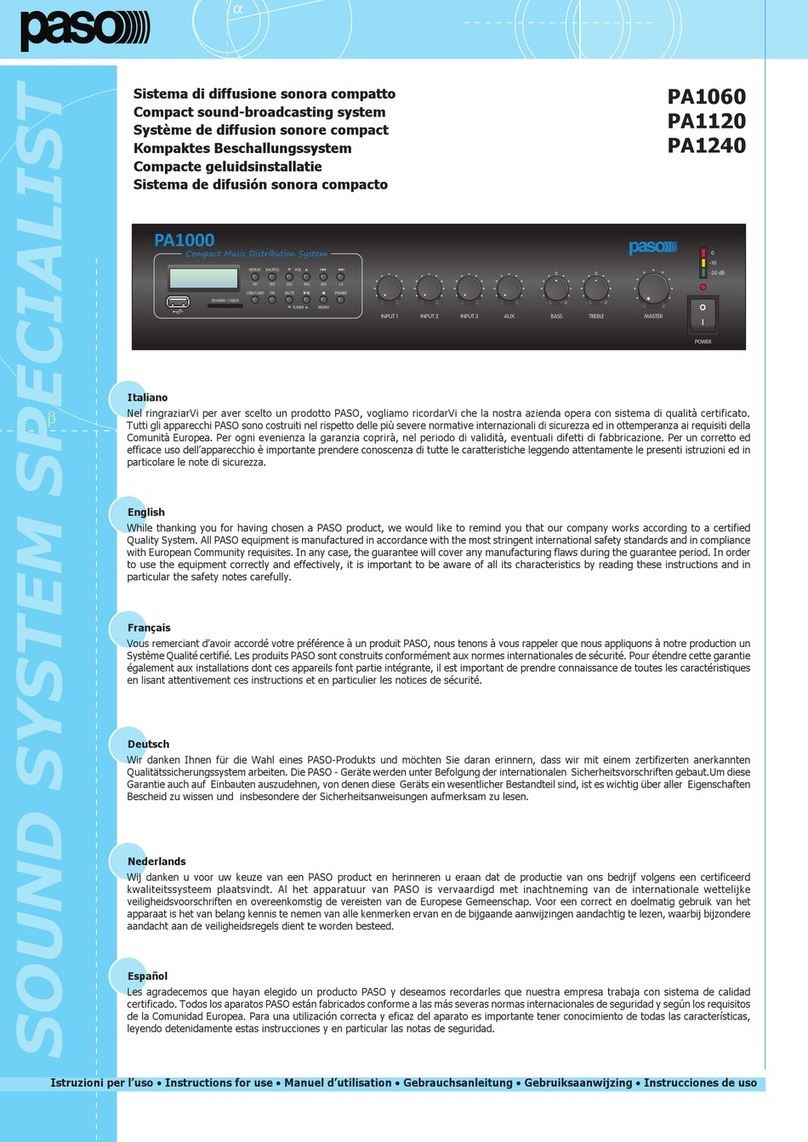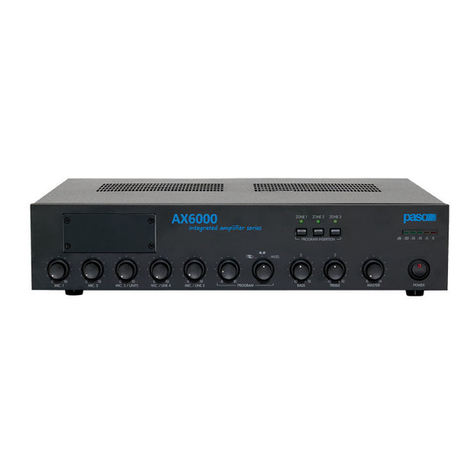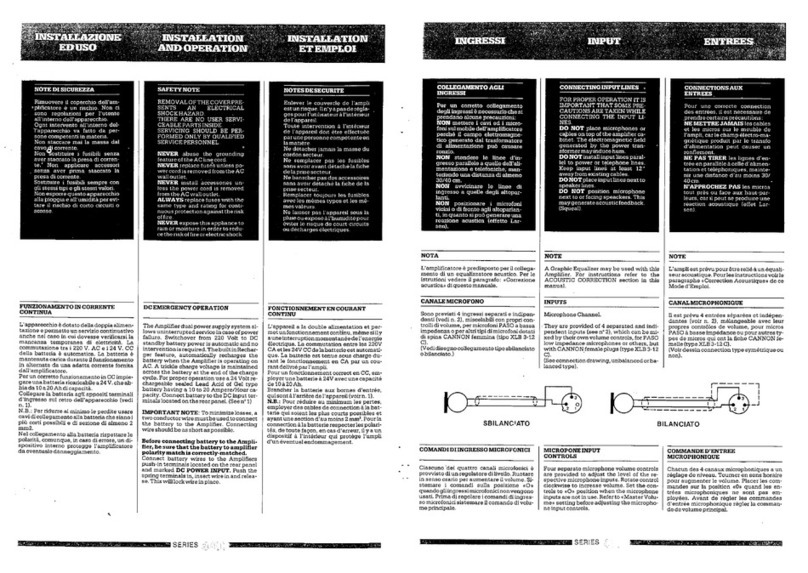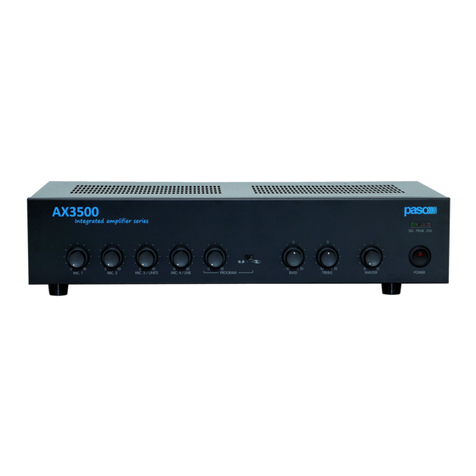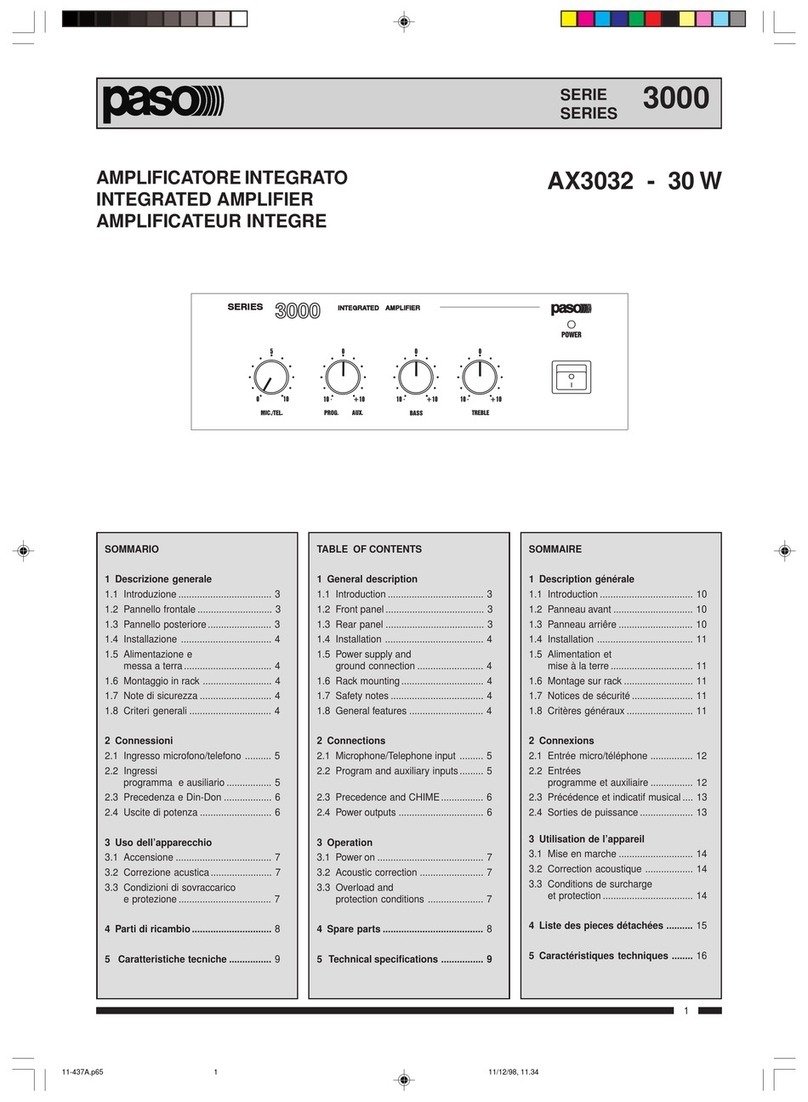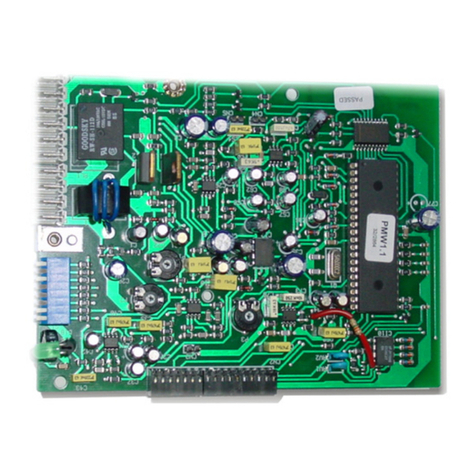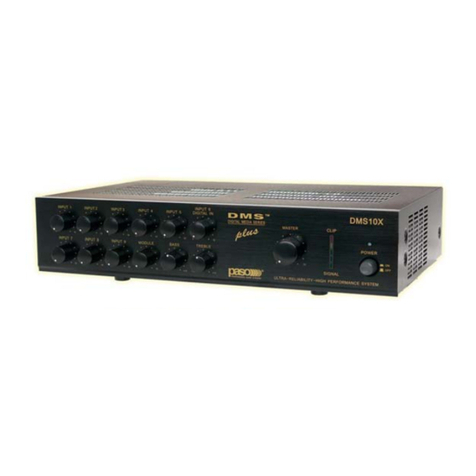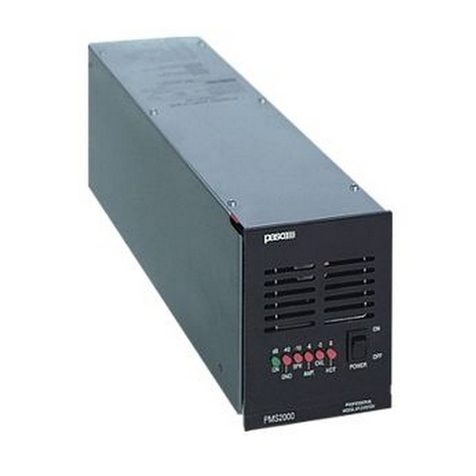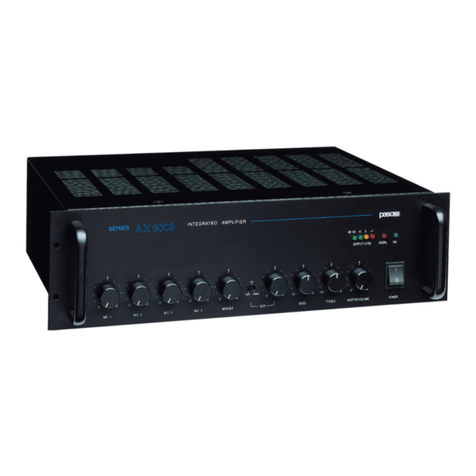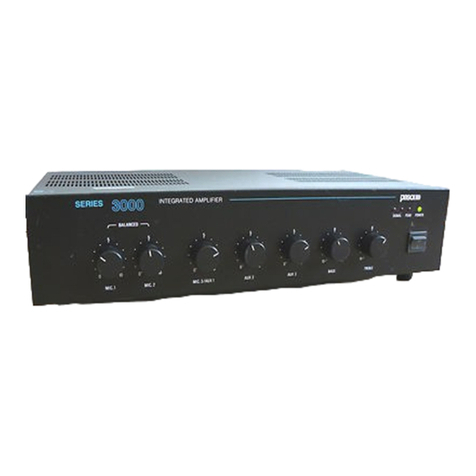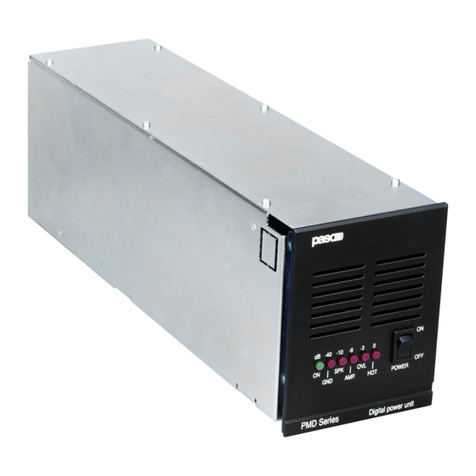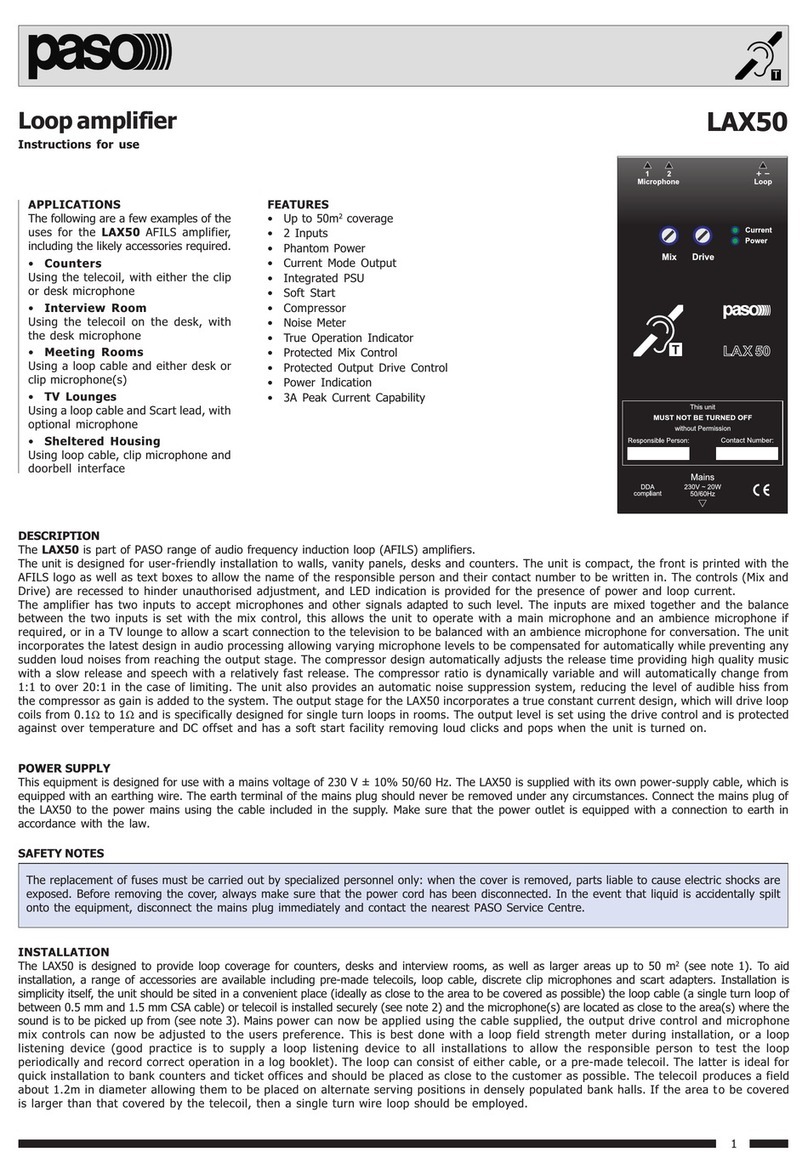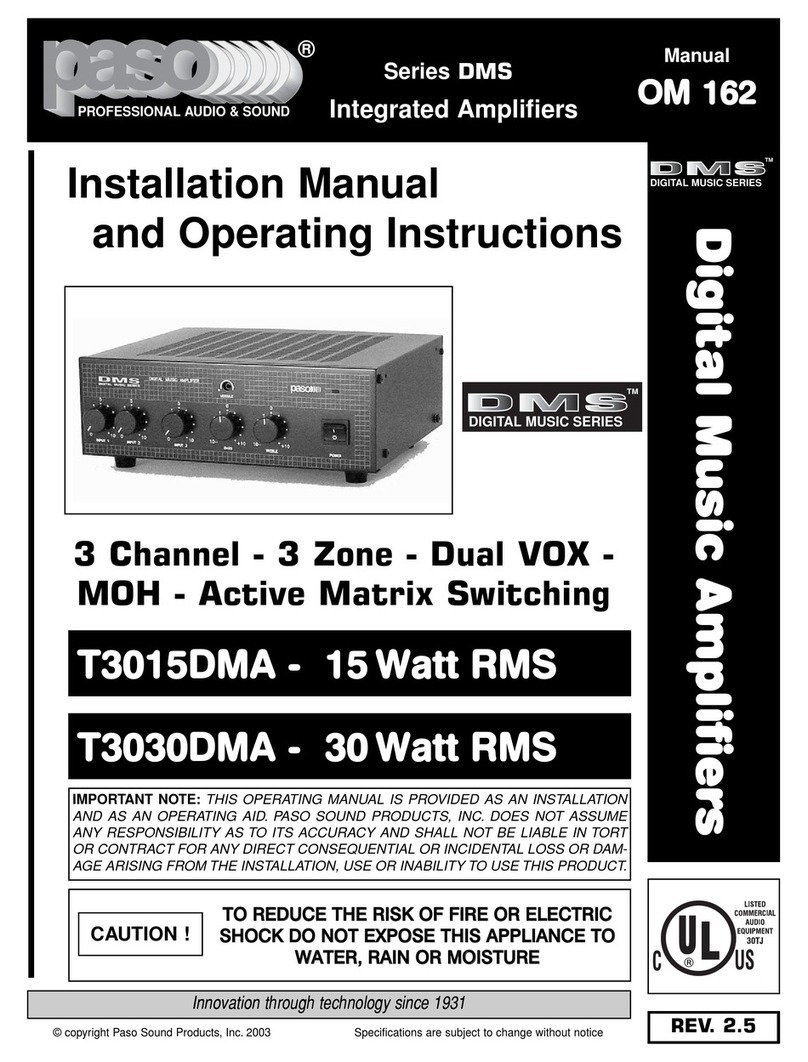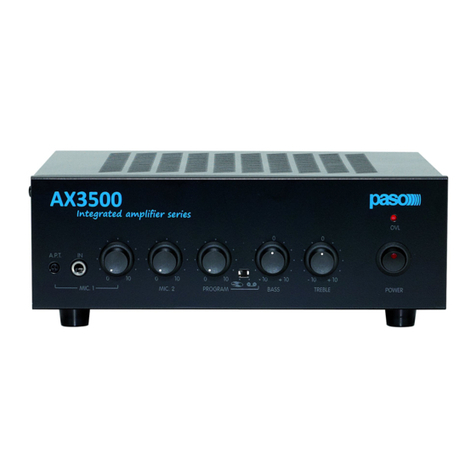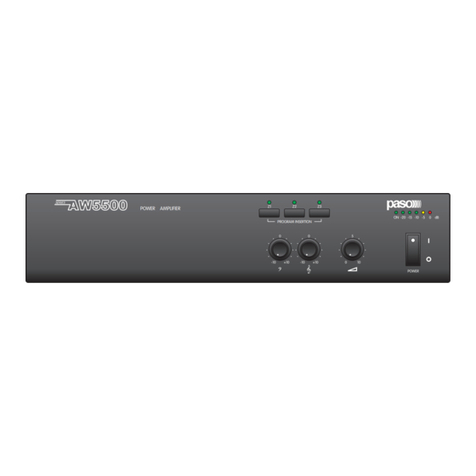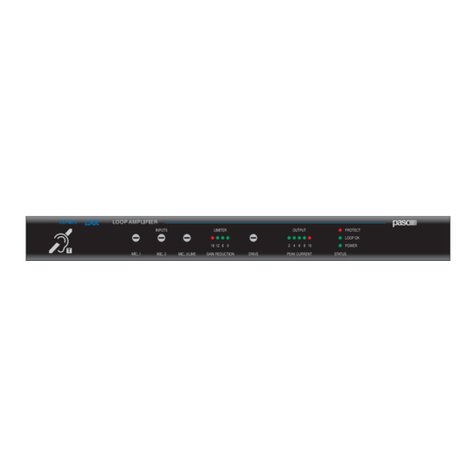SERIE 5000
2
5000
SERIE
SERIES
Verstärker
Versterker
Amplificadores
AX5060
AX5120
AX5240
INSTRUCCIONES DE EMPLEOGEBRUIKSAANWIJZINGGEBRAUCHSANLEITUNG
SUMARIO
1. Descripción general
1.2 Panel frontal .................................. 25
1.2 Panel trasero ................................. 25
2. Advertencias generales
2.1 Instalación ..................................... 26
2.2 Alimentación .................................. 26
2.3 Notas para la seguridad .................. 26
3. Conexiones
3.1 Criterios generales ......................... 27
3.2 Entradas microfónicas .................... 27
3.3 Entradas MIC/LINE ........................ 27
3.4 Entradas auxiliares ........................ 28
3.5 Entrada telefónica ......................... 28
3.6 Salidas 'Music On Hold' (MOH) ........ 29
3.7 Precedencia microfónica
y señal de preaviso ........................ 29
3.8 Salidas de potencia ........................ 30
3.8.1 Sistemas con baja impedancia ........ 30
- Cálculo de las impedancias
en las conexiones en serie ........... 30
- Cálculo de las impedancias
en las conexiones en paralelo ...... 30
3.8.2 Sistemas de tensión constante ....... 31
- Cálculo del número de difusores
(mediante las potencias) ............. 31
- Cálculo del número de difusores
(mediante las impedancias) .......... 31
3.9 Salida grabadora/booster
y toma ecualizador ......................... 31
3.10 Selección de zonas de escucha....... 32
4. Uso del aparato
4.1 Encendido ...................................... 33
4.2 Control de volumen principal .......... 33
4.3 Corrección acústica ........................ 33
- Control tonos bajos (BASS) .......... 33
- Control tonos agudos (TREBLE) ... 33
4.4 Sobrecarga y protección ................ 33
5. Características técnicas ......... 34
6. Partes de recambio ................. 35
Esquema de bloques .......................... 36
INHOUD
1. Algemene beschrijving
1.2 Frontpaneel ................................... 25
1.2 Achterpaneel ................................. 25
2. Algemene aanwijzingen
2.1 Installatie ...................................... 26
2.2 Voeding.......................................... 26
2.3 Opmerkingen over de veiligheid ...... 26
3. Aansluitingen
3.1 Algemene criteria ........................... 27
3.2 Microfooningangen ........................ 27
3.3 MIC/LINE ingangen ........................ 27
3.4 Hulpingangen ................................. 28
3.5 Telefooningang ............................... 28
3.6 Uitgangen Music On Hold (MOH) .... 29
3.7 Microfoonvoorrang en
waarschuwingssignaal .................... 29
3.8 Vermogensuitgangen ...................... 30
3.8.1 Systemen met een lage impedantie . 30
- Berekening van de impedantie
bij serieschakeling........................ 30
- Berekening van de impedantie
bij parallelschakeling .................... 30
3.8.2 Constante spanningssystemen....... 31
- Berekening van het aantal
klankverspreiders (via de kracht) . 31
- Berekening van het aantal
klankverspreiders (via de impedanties) 31
3.9 Uitgang recorder/booster
en aansluiting equalizer.................. 31
3.10 Selectie van luisterzones ................ 32
4. Gebruik van het apparaat
4.1 Aanzetten...................................... 33
4.2 Hoofdvolumeregeling ..................... 33
4.3 Akoestische correctie ..................... 33
- Regeling lage tonen (BASS) ......... 33
- Regeling hoge tonen (TREBLE) ... 33
4.4 Overbelasting en beveiliging .......... 33
5. Technische kenmerken ........... 34
6. List vervangingsonderdelen ... 35
Blokschema ........................................ 36
INHALTSANGABE
1. Allgemeine Beschreibung
1.1 Frontpaneel ................................... 14
1.2 Rückpaneel .................................... 14
2. Allgemeine Hinweise
2.1 Installation..................................... 15
2.2 Einspeisung .................................... 15
2.3 Sicherheitsanweisungen ................. 15
3. Anschlüsse
3.1 Allgemeine Hinweise ....................... 16
3.2 Mikrofoneingänge .......................... 16
3.3 Eingänge MIC/LINE ........................ 16
3.4 Hilfseingänge ................................. 17
3.5 Telefoneingang .............................. 17
3.6 Ausgänge Music On Hold (MOH) .... 18
3.7 Mikrofonvorrang und
Vorankündigungssignal ................... 18
3.8 Leistungausgänge .......................... 19
3.8.1 System mit niedriger Impedanz....... 19
- Berechnung der Impedanz
bei Reihenschaltungen ................. 19
- Berechnung der Impedanz
bei Parallelschaltungen ................ 19
3.8.2 Systeme mit konstanter Spannung .. 20
- Berechnung der lautsprecheranzahl
(durch die leistungen) ................... 20
- Berechnung der lautsprecheranzahl
(durch die impedanzen) ................ 20
3.9 Ausgang Aufnahmegerät/Booster
und Buchse Equalizer ..................... 20
3.10 Auswahl der Klangzone .................. 21
4. Gebraüch des Gerates
4.1 Einschalten .................................... 22
4.2 Steuerung der Hauptlautstärke ...... 22
4.3 Tonkorrektur .................................. 22
- Tiefenkontrolle (BASS) ................. 22
- Kontrolle hohe töne (TREBLE) ...... 22
4.4 Überlastung und Schutz ................. 22
5. Technische Eigenschaften ...... 23
6. Ersatzteilliste ........................... 24
Blockschema....................................... 36
11-541.p65 26/10/01, 14.192
